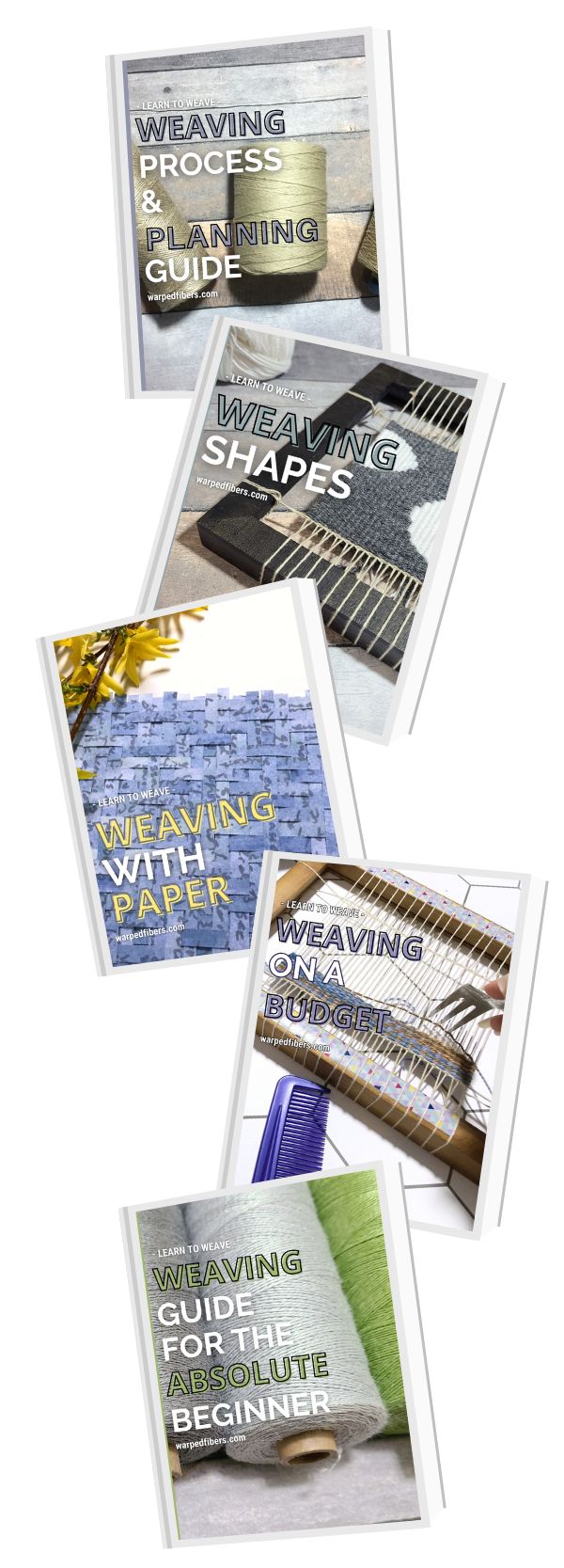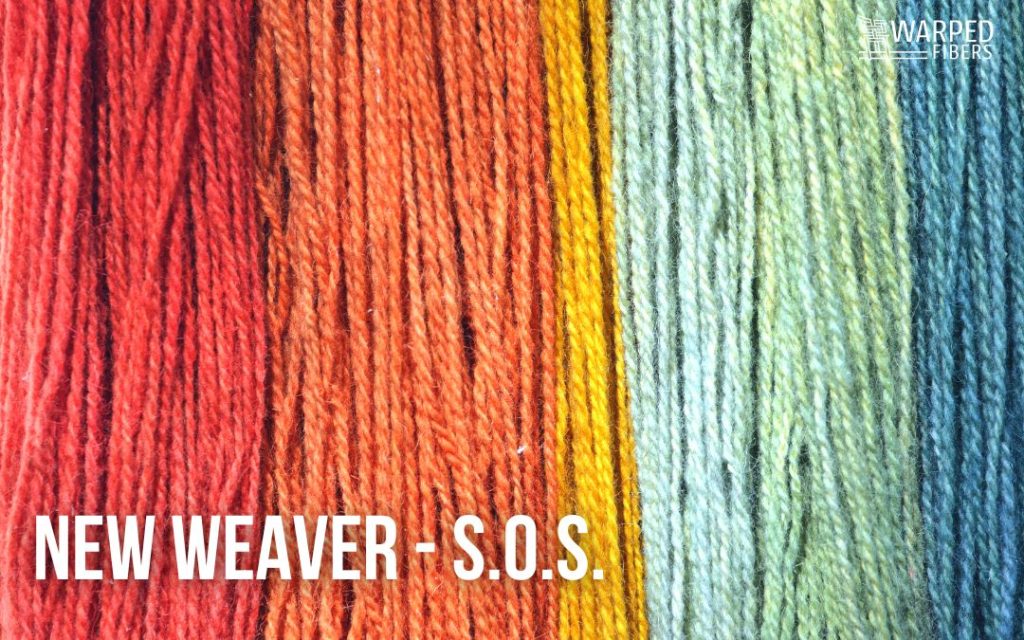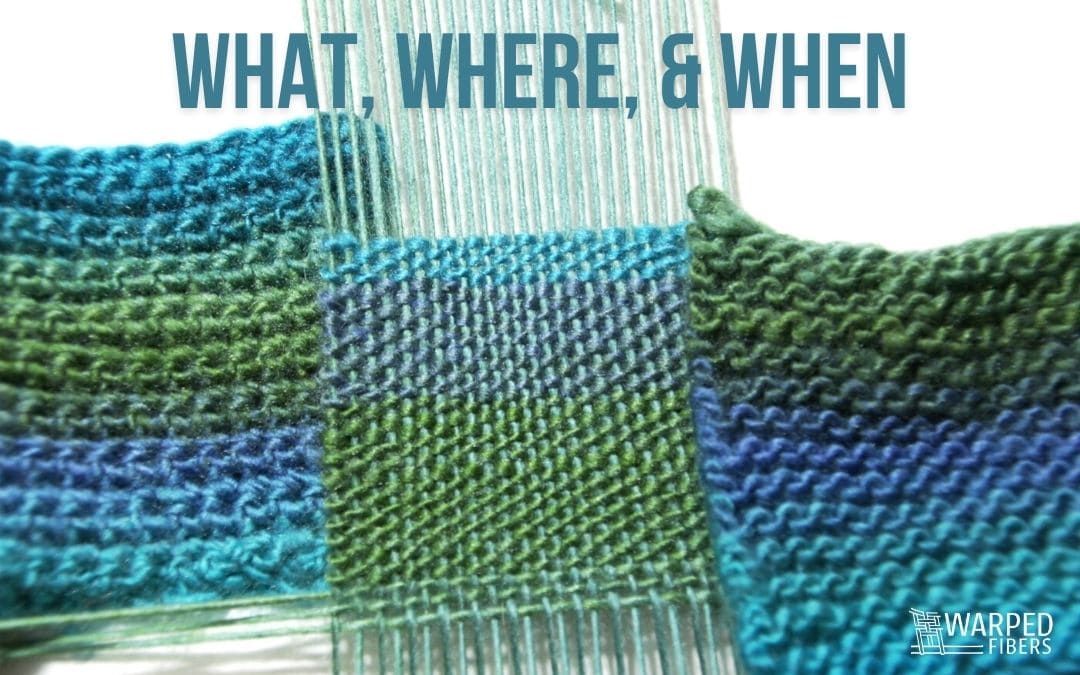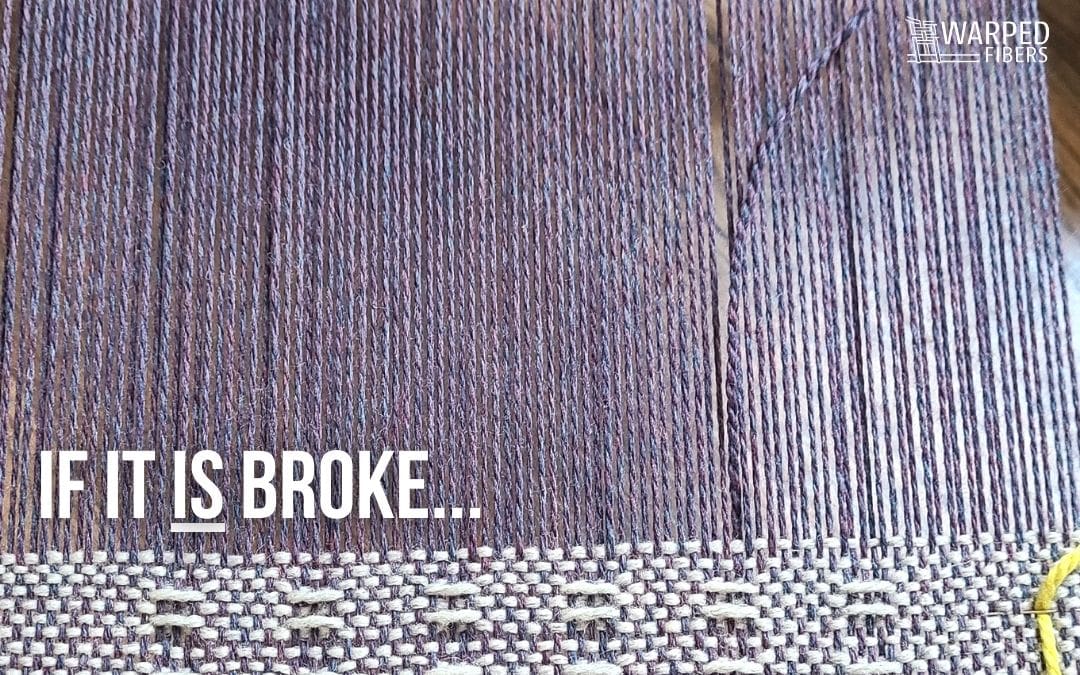Yarn is yarn, right?
…right?
Well, not necessarily.
While knitting/crochet and weaving yarn can sometimes be used interchangeably – there are notable differences. I already did a blog post on decoding weaving yarn sizes that you should check out if you are in the market for weaving yarn. That being said, it can be oh so tempting to stroll into your local craft or yarn store and pick up any fresh skein of yarn that catches your eye. Trust me, I often fight this temptation.
Yarn is just so beautiful.
Unfortunately, you can’t always use those yarns for weaving (at least not for warp). Really, the topic of knitting and crochet yarn is a whole new section of the yarn universe.
For the purpose of this post I will refer to yarn as either weaving or knitting yarn, but keep in mind that yarn that works for knitting should also work for crochet. For the record – I am not bias towards knitting over crochet (in fact I’m a much better crocheter than knitter!), but I had to choose one for the sake of readability and knitting won.
Let’s go down the yarn rabbit hole.
Sizing
One of the most notable differences in the weaving vs knitting yarn discussion is that the sizing is so COMPLETELY different.
The quick and dirty version of weaving yarn sizes is that weaving yarn sizes are categorized by fractions where the top of the fraction is the size and the bottom is the number of plies (think 8/4 cotton). These sizes vary depending on the material.
Knitting yarn on the other hand is categorized by descriptions. They range from 0 (lace) to 7 (super bulky) and within these categories they are further categorized: Chunky, Worsted, Sport, DK (Double Knit), Baby, Sock, Fingering, and Lace.
Yarns are placed in these categories by measuring their WPI or Wraps Per Inch around a ruler. Due to this, generally speaking you can expect any yarn in their respective category to create the same amount of stitches if you use the same hook or needle. This makes using these yarns for knitting or crochet simple.
So what does that mean for weaving?
Well…
Unfortunately, unlike weaving yarn, I don’t know of any knitting or crochet yarns that give you a recommended warp sett on the packaging or website. Normally when buying weaving yarn online you can look up the recommended warp sett or EPI that will tell you how many warps per inch you will need for balanced weave.
Don’t worry! There is a way.
I do highly recommend you check out the EPI post linked if you are brand new before moving on to comparing WPI in the next section! When it comes to weaving – EPI is way more important to planning your weaving than WPI. WPI mostly comes into play if you are looking at non-weaving yarns.
Comparing WPI
Now, just like most knitting yarns don’t automatically tell you the recommended EPI – most weaving yarns don’t automatically tell you the recommended WPI.
Luckily, there is an easy way to figure out a general WPI based on the information that is usually given.
All you have to do is multiply the recommended EPI by 2.
Let’s look at an example:
Weaving EPI x2 = Approximate WPI
My go to favorite sample warp yarn: 8/4 Cotton Rug Warp
Recommended warp sett (EPI) for balanced weave: 12-15 (this number comes from experience, but also from the website I purchased it from)
12 x 2 = 24
15 x 2 = 30
WPI = Approximately 24 – 30
If you then take that info and look at the charts HERE and HERE – then you can see that 8/4 cotton is similar to a category 1 knitting yarn or fingering/ sock weight.
This, of course, works the other way too.
Strength
Weaving yarn tends to be much stronger than knitting and crochet yarn. This is because weaving requires the yarn to be consistently under high tension.
Due to this, you might not always be able to use knitting yarns for your warp.
They will still work well as weft, since anything can be weft.
So how do you know if it will work as warp? Besides reading the post I linked at the beginning!
You have to do the strength test. If you own the yarn then this is really easy. Just take the yarn in both hands and give it a really good tug. If it breaks easily? Weft only. If it takes a lot to break? Possibly ok as warp if you don’t need a lot of tension. Doesn’t break? Perfect.
If you don’t own the yarn then if you are lucky they yarn store employees will know about weaving and be able to help you determine if a specific yarn is strong enough to be under high tension.
Employees not sure? You could always buy it anyway and if it breaks – it will still work for weft.
So if you did happen to stroll into that yarn store and pick up some beautiful yarn – don’t worry! You can still find a way to use it in your weaving!
Knitting yarn also has a tendency to be stretchier than weaving yarn. This is because since it isn’t spun as tightly it has more energy and spring to it. This means that if you decide to use it for warp – once it is no longer under tension, your weaving could change. Each yarn could be different though – so it’s best to try it out first if you want to use it.
When in doubt, though, it is probably best to purchase yarn made for weaving – at least when it comes to your warp.
Smoothness
Is that a word?
When yarn is spun commercially it often is spun with oils. These oils make it easier to spin and keep all the individual fibers neat and smooth.
A lot of weaving yarns maintain these oils even after they are put on the cone and shipped to your studio.
Why would they do that?!?
Smooth yarns that still have their oils on them can be easier to warp your loom with! This is especially true when your EPI is tight. This means all of your warp yarns will be closer together and if you are warping a floor/ table/ or rigid heddle loom then the dents will be smaller. Therefore, it is harder to pass warp through. If they are oiled up – well you get the picture.
That doesn’t mean that the yarn will be oily to the touch though. So don’t feel like you have to go wash your hands immediately after handling it.
It does mean that you will need to consider this when planning your weaving. While the oils make it easier to warp your loom – if you are weaving something that won’t be washed you might want to consider washing the yarn first. If you are weaving functional work then don’t worry – just wash it when it’s all said and done and it will “bloom” and fill out.
Not all weaving yarns are like this – but some are.
Knitting yarns on the other hand, don’t share this oily characteristic. They aren’t inherently as smooth as weaving yarns – but that doesn’t mean that none of them are smooth. Just that there is a greater chance of them being fuzzy.
So what does this all mean? It means that when you are purchasing yarn you have to be aware of what you are buying. It’s always a good idea to ask questions and when in doubt – make a sample!
A.K.A. the Warped Fibers motto!
⇣ Love It? Share It! ⇣
You May Also Like

























Please explain the “front to back” or back to front” type weaver.
Front to back and back to front refers to how you warp your floor or table loom. Some weavers start at the front (like me) and others start at the back.
Wonderful article. I had no idea about the oils. My wife of 50+ years owns a yarn shop, so mostly knitting yarn is available to me for weaving. I look for yarns blended with silk for strength and consistency, otherwise I end up with lots of broken warp yarn and an equal number of T-pins. Floats seems better hanging from the back rather than wound in to the warp. Knitting yarn requires a gentle touch, and maybe a slightly wider sett to keep from pilling the yarn.
The eternal weavers question: back to front or front to back? Front to back gets a more consistent warp but it’s harder on the yarn going through reed and heddles twice.
I’m definitely a warp front-to-back type weaver. Perhaps it is because it is how I learned, but I also don’t usually have issues with broken warps. I also rarely use anything other than smooth weaving yarns for warp, so that probably helps!
Thanks for your insights!
Much appreciated your excellent and useful article re yarns. Thanks
So glad you found it useful!
Wow! I’m not a weaver a knitter or a crocheter, so I had no idea there was this much to yarn! I do fondly remember my grandmother knitting and crocheting though.